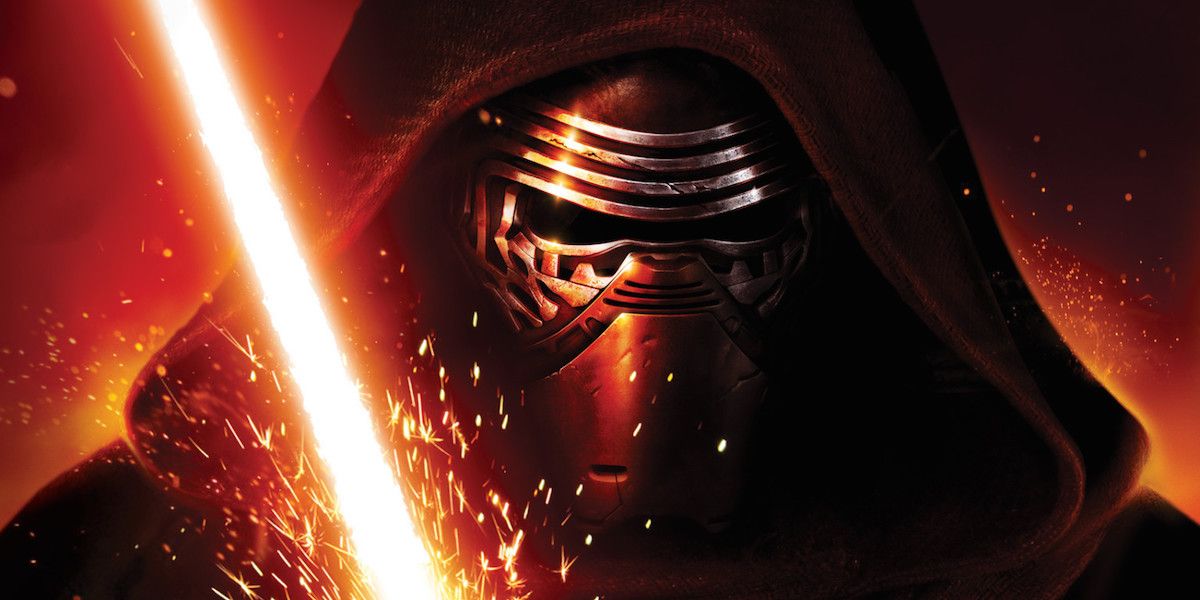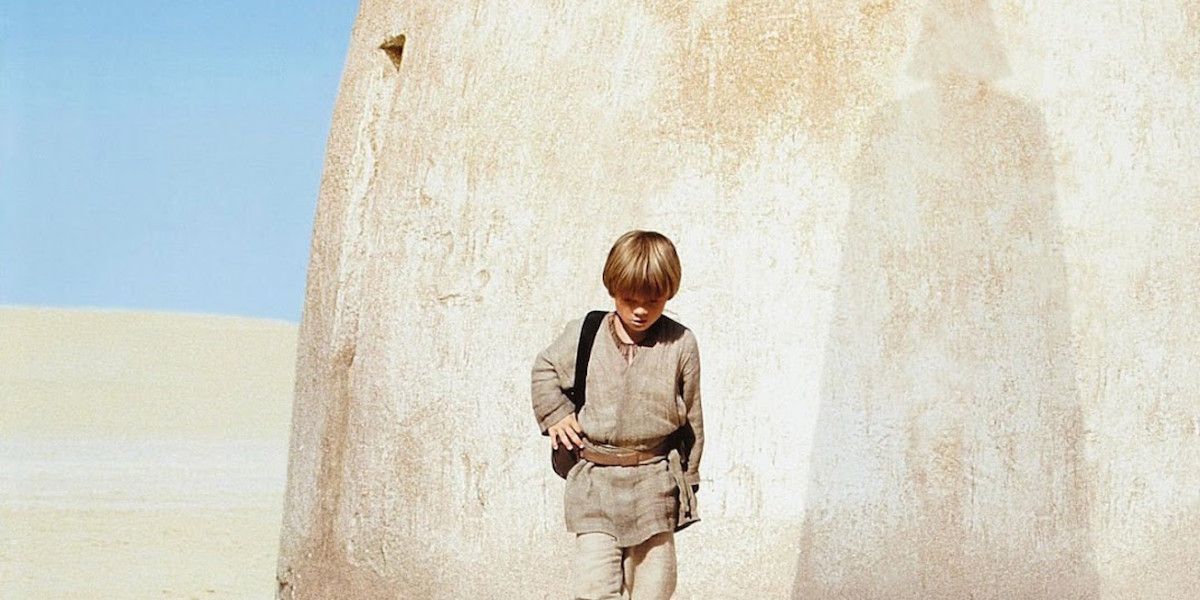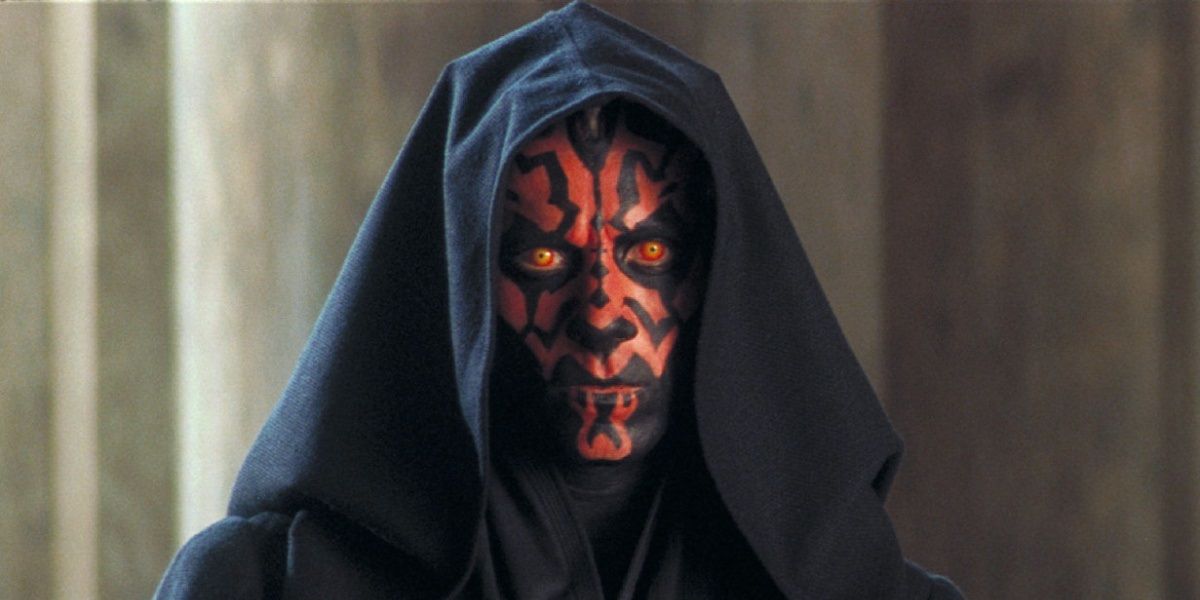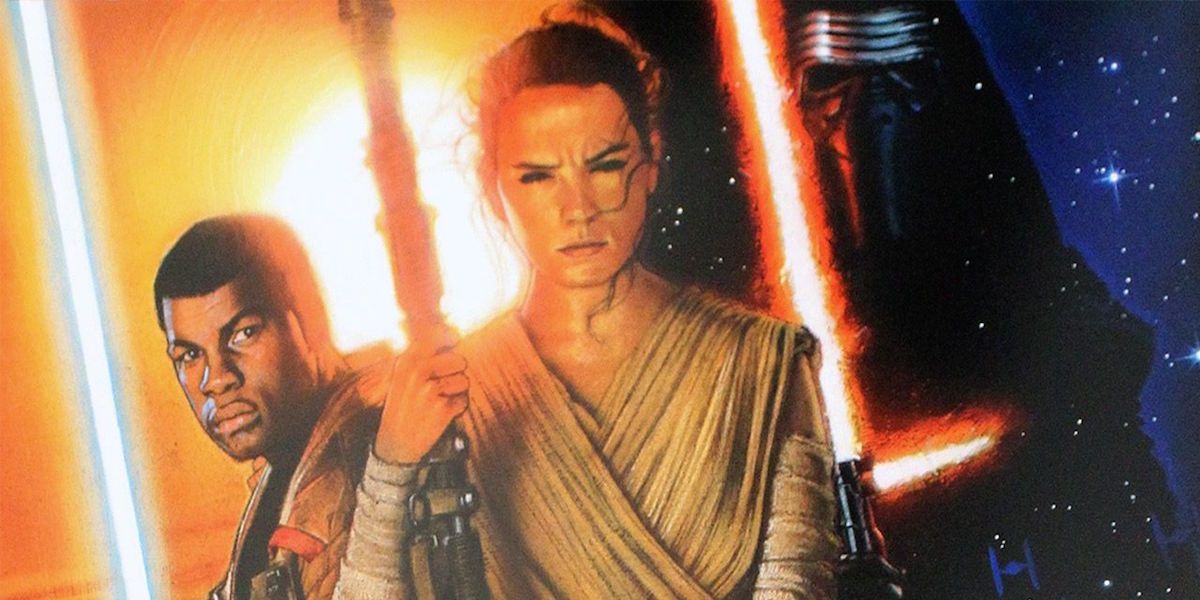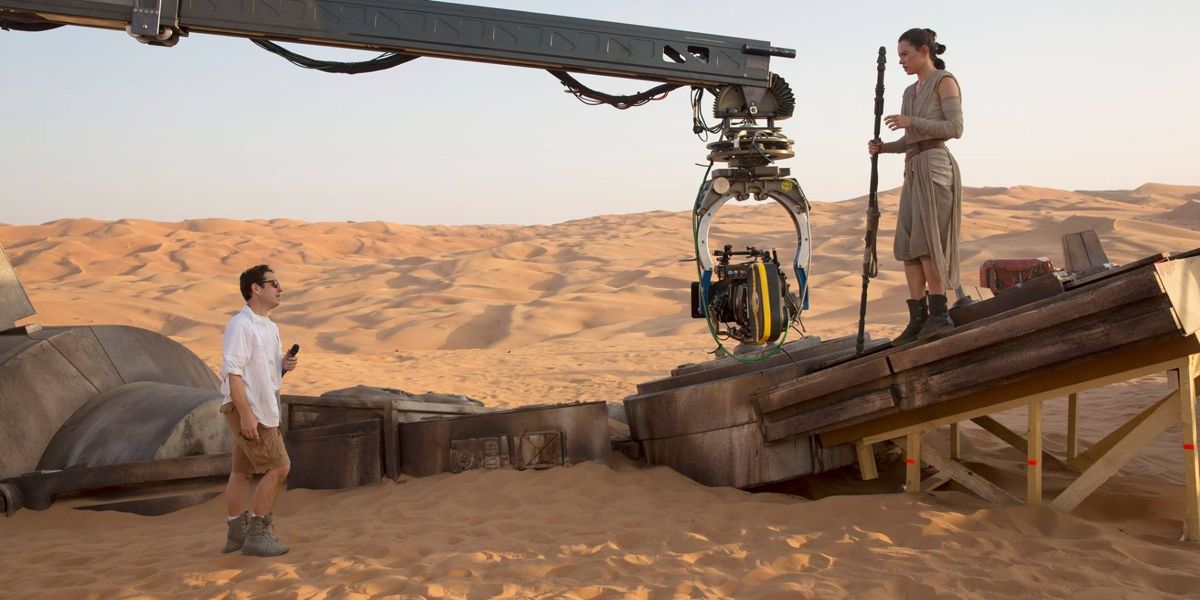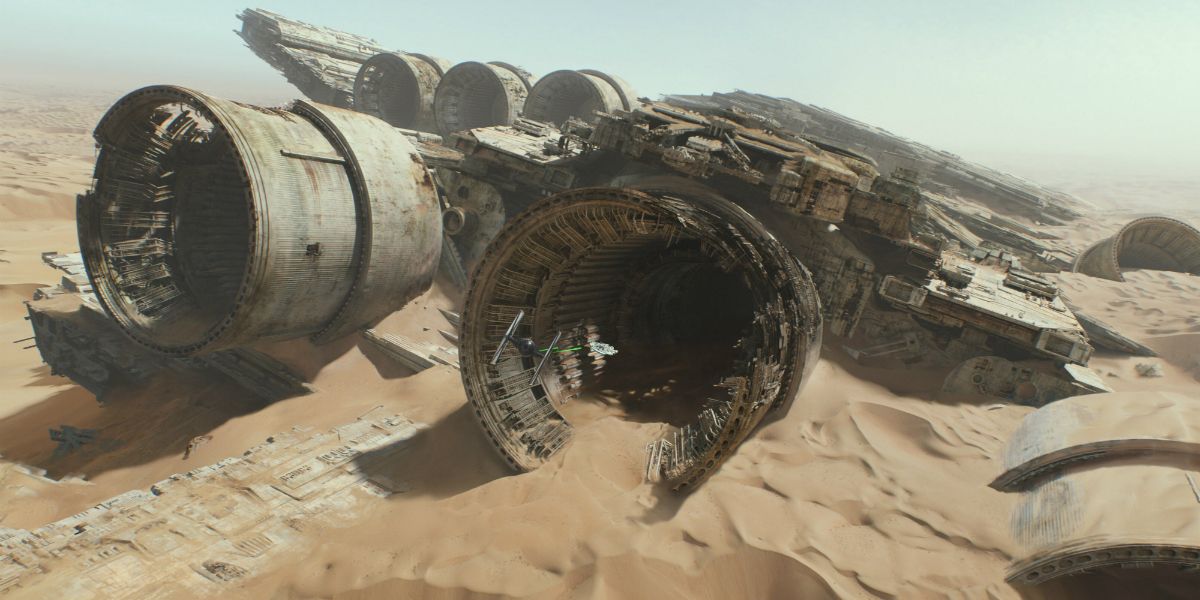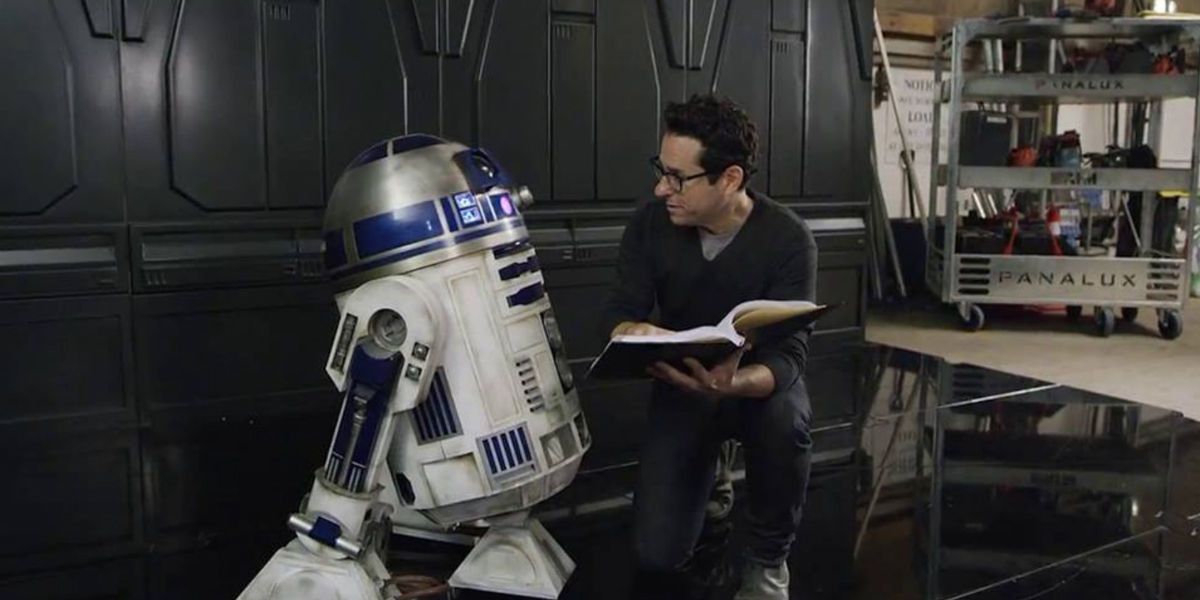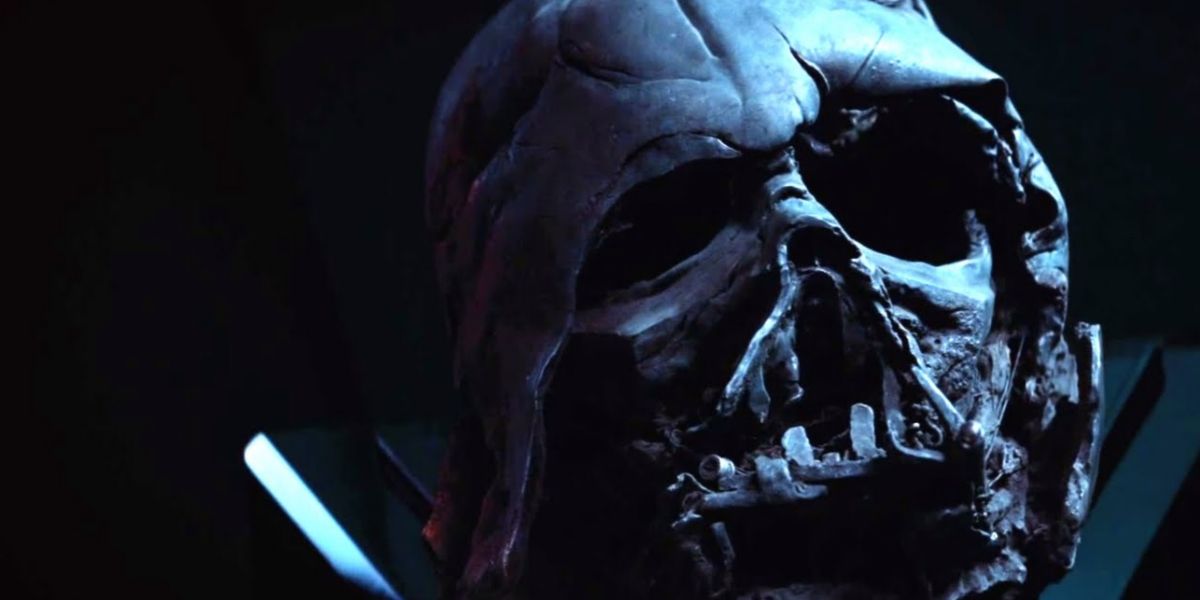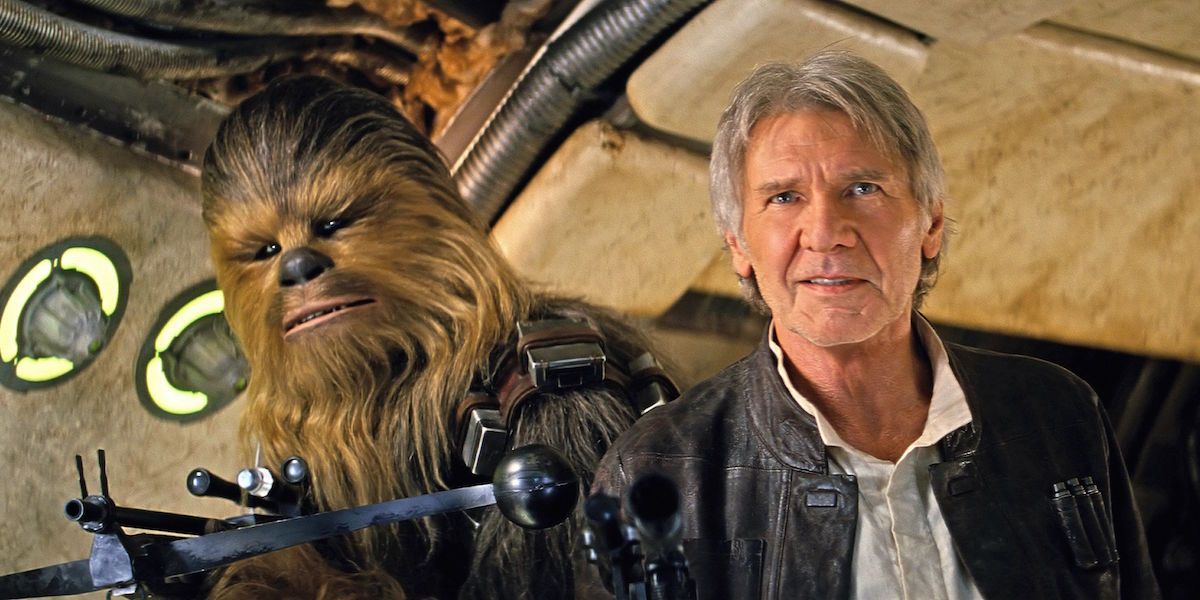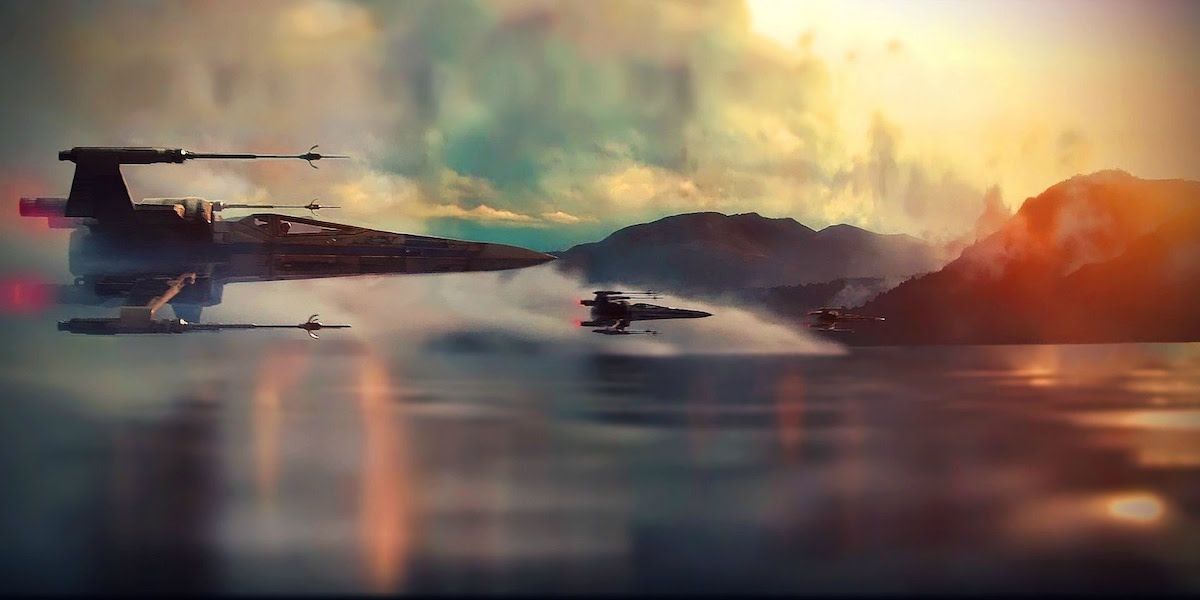For two decades, Star Wars was a seminal piece of movie fandom - a must-see experience that inspired childhood fantasy, while wowing adult moviegoers with cutting-edge special effects and a quality character story. The franchise endured a few bumps along the road (brother-sister romance and ewoks, among other things); but even though Empire Strikes Back remains, arguably, the "best" of George Lucas' original trilogy, Return of the Jedi still left plenty of viewers clamoring for more adventures in the Galaxy Far, Far Away. For years, Jedi-lovers around the world made do with "Special Editions" and one reworked home retail release after another - until Lucasfilm finally gave fans what they really wanted: more live-action Star Wars episodes.
Instead of continuing the story of Luke Skywalker, Lucas doubled back (kicking-off the prequel movie craze) to explore the early days of Darth Vader, before Anakin Skywalker turned into the galaxy's most powerful Sith Lord, and the fandom was delighted - until they saw the movie. Now, nearly twenty years later, moviegoers are once again getting hyped for "The Return of Star Wars" to the big screen with Star Wars: Episode VII - The Force Awakens - but with such high expectations in front of him, is it even possible for director J.J. Abrams to deliver a movie that lives-up to pre-Episode 7 buzz and speculation?
The Past: A Cautionary Tale
It might be hard to remember now, since the prequels were (for most fans) a major disappointment, but back in 1999 moviegoers were extremely excited for Episode I. While internet marketing (and online social-commentary) was still in its infancy, 20th Century Fox deployed a similar build-up to the one at play in Disney's Episode 7 advertising. Following the casting of Ewan McGregor and Jake Lloyd in the iconic roles of Obi-Wan Kenobi and Anakin, respectively, the marketing department debuted a simple but haunting teaser poster - featuring 9-year-old Lloyd on Tatooine casting a Darth Vader-shaped shadow. The poster teased a question that fans had been debating for years, a question that was central to the prequel story: how did a heroic and brave kid become the galaxy's most feared villain?
Days later, the studio premiered Episode I's teaser trailer - in front of Meet Joe Black screenings. Fox released the video online the following day, but fans were so eager to see what Lucas was cooking up that many paid for early Meet Joe Black tickets, sat through the Star Wars trailer, then left before the feature film. It might sound ridiculous now, but at the time, moviegoers were extremely hopeful that Episode 1 would make-up for years of theatrical re-releases and Special Edition retooling - assuming that since Lucas was at the helm of these new Star Wars movies, Episode I would mark the glorious return of geekdom's most beloved franchise.
Check out the video below, capturing an authentic audience reaction to the Episode I trailer:
Little did fans know, Episode 1's striking Sith apprentice, Darth Maul, would get one-tenth the screen time of fumbling alien-sidekick Jar Jar Binks, and wouldn't even survive beyond the first installment of the prequels. Looking back, the trailer is filled with red flags that, out of context, went unnoticed: a heavy reliance on CGI, as well as melodramatic handling of Anakin's story, most notably.
However, the trailer only increased excitement for Episode 1 - and fans continued to line-up for pre-release events - including a Force Friday-like celebration where retailers unveiled Episode 1 merchandise during midnight release parties. Where Sphero's app-controlled BB-8 was the hottest toy of Episode 7's Force Friday (more on that later), Darth Maul 12-inch deluxe figures (read: dolls) and Sebulba podracer vehicle packs were the talk of the comic book shop in 1999.
The second Episode 1 trailer premiered ahead of the Wing Commander video game movie (starring Freddie Prinze, Jr., Saffron Burrows, and Matthew Lillard). Once again, many fans walked out of the theater once the Star Wars trailer was shown (a prudent move on their part...).
Years later, fans may look back at Episode 1 as a disappointment, but at the time, even after release, hype for The Phantom Menace was still alive and well. The film set box office records for midnight showings, opening weekend ticket sales, and all time grosses - to this day, it remains in the top 10 highest domestic box offices of all time (and that's unadjusted for inflation).
One might assume the financial success of the film could be credited to fans ignoring critics - in favor of experiencing the Episode 1 "event" for themselves. However, critics (just like fans) were also caught up in the excitement, and while Episode 1 might have a "rotten" rating on Rotten Tomatoes today (sitting at 57%), the film scored plenty of positive reviews back in 1999.
Check out Roger Ebert's review of The Phantom Menace below (which also includes an interview with George Lucas):
It wasn't until weeks after release that mass viewers turned on Episode 1 - and backlash began to catch on. In spite of initial buzz for the movie, vocal detractors, not to mention second and third viewings by fans, started to paint a very different picture of The Phantom Menace. Criticisms of Jar Jar Binks, questions of racial stereotyping (Nute Gunray), convoluting of mythology (midi-chlorians), and undermining of Darth Vader, dominated the conversation - and caused even dedicated fans to question whether Lucas' unchecked creative control over the final product had hurt - rather than helped - his film.
Even the most positive reviews indicated that the movie was clumsy at times - with hopes that time spent laying the prequel series foundation would payoff in Episodes 2 and 3.
Nevertheless, in the time since Episode 1's release, reviewers, industry analysts, and even documentarians, have gone back and examined reaction to The Phantom Menace - with many suggesting that, while Lucas could have delivered a better movie, the real villain of Star Wars: Episode 1 may have been unrealistic expectations.
Which begs the question: Now that the Star Wars 7 trailer is the most-watched movie trailer in the history of cinema, garnering praise, and heralding the "true" return of Star Wars, is it even possible for The Force Awakens to live-up to that level of hype and excitement?
NEXT PAGE: What Did Disney and J.J. Abrams Learn From the Prequels?
What Did Disney and J.J. Abrams Learn From the Prequels?
Since the announcement that J.J. Abrams would direct Star Wars: Episode 7, the filmmaker has toed a very fine line, touting lessons Lucasfilm learned from prequel backlash, without outright throwing George Lucas under the bus. Instead, Abrams has focused his production, and his public responses, on what made the original trilogy so entertaining (and imaginative).
Beyond celebrating the strength of Star Wars as a storytelling platform, Abrams has spoken at length about the many challenges that came along with it. In addition to immense secrecy, honoring the franchise legacy, and continuing the journey of fan-favorite characters, there's one topic that Abrams has discussed more than any other: practical effects.
“It was really important for a sense of authenticity that the set be built, the exterior, interior, that we go to real locations that were actually in the sun. I know it sounds silly, but in the behind the scenes reel you see this giant gimbal of the Millennium Falcon cockpit and it was outdoors. The reason we did it – we didn’t have to do that, but the reason we wanted to was, you just can’t fake sunlight. You can do a pretty good imitation, but you can just tell. There was something about wanting to see Daisy’s character actually sitting in the cockpit with sunlight streaking across in motion. It’s a little detail and I’m not sure anyone’s going to care about that, but it’s an incredible thing when you see it just how much better it looks because it’s real. So we just tried to do that as much as we could and it was often challenging but it was worth it.”
Still, even with a level-headed understanding of the baggage that came with relaunching Star Wars in live-action, Abrams and his team were not immune to hype - and, like fans, found it hard to completely set aside their admiration for the Lucas franchise and remain entirely objective.
Speaking on what it was like to direct a Star Wars movie - after being a fan for decades - Abrams outright admitted that it wasn't always easy to separate the filmmaker from the fan:
“That was a constant in the production of the movie: moments where we would all look around and realize what we were doing and gasp a little bit and then dive back in. When you’re on the set of the Millennium Falcon or staring into the eyes of C-3PO giving direction, it’s pretty easy to have that fanatic part of you bubble up. But our job was to be there to tell this story, not to be a fanboy.”
As a result, if the cast, crew, and moviemakers had trouble tempering their own excitement, it's understandable that die-hard fans are becoming increasingly fervent about Episode 7 - now that trailers, toys, and other marketing materials have begun to paint a cautiously optimistic picture.
After all, even though the initial Star Wars - Episode 1 teasers drew positive pre-release hype, as fans braced for a new adventure in one of Hollywood's most imaginative and expansive backdrops, Force Awakens teasers seem to suggest that Abrams has refined the franchise formula. Seeing the trailers side-by-side, it's clear Lucas was reveling in new (CGI) technologies that allowed him to increase scale - to fully-realize his vision of the Galaxy Far, Far Away. Conversely, Force Awakens teasers suggest that Abrams is focused on delivering a great Star Wars film experience - even if that means a return to more traditional approach to film production.
The crew said as much when they appeared in a behind-the-scenes video, which debuted at Comic-Con 2015, detailing what Star Wars means to each of them - as well as how The Force Awakens team challenged conventional production plans to deliver a worthy successor to Return of the Jedi.
But what makes a worthy successor? Based on the video, a passionate crew capable of finding the balance between old and new. As Mark Hamill suggests, Abrams and Lucasfilm employed cutting-edge ("evolved") technology but kept one foot in the pre-digital era - while Oscar Isaac maintains that the team's enthusiasm for Star Wars 7 will be palpable to viewers when The Force Awakens finally hits theaters.
It's a unique situation - where former fans, with the aid of a few returning veterans, have been given the chance to continue a story they adored as children. That reverence, and distance from the original creation process (a luxury that George Lucas did not have for the prequels), might be the perfect blend of talent and heart on which to form a new generation of Star Wars movies. While some fans remain skeptical of Abrams - especially depending on how they feel about his prior sci-fi movie revival, Star Trek - others already view him as their own "New Hope": a man that faced his predecessor's mistakes and found the strength to pursue a different path.
Yet, with so much excitement in the system, and so much animosity still directed toward Lucas, Abrams remains on the edge of potential blowback. Celebrating the filmmaker as Star Wars' savior, the counterpoint to Lucas' failure in delivering a fan-approved prequel trilogy, could actually hurt Abrams as well as fans in the long run.
Without question, the Star Wars universe is big and vast enough to set the stage for great films (and TV shows) in the coming years; nevertheless, hype can color our view or reality. Will any modern filmmaker ever be able to create a Star Wars movie that can truly rival the thirty-years worth of love and nostalgia that fans have poured into Episodes 4 - 6?
Specifically, even if Star Wars 7 is a good movie, could fans still be disappointed (or at the very least, underwhelmed)?
NEXT PAGE: If Episode 7 is Good (Not Great) Does J.J. Abrams Fail?
If Episode 7 is Good (Not Great) Does J.J. Abrams Fail?
Given the high stakes, immense resources, and talent involved in the project - it's hard to imagine that The Force Awakens will be an outright bad movie. Cynics will find things to complain about (after all, one member of the production has already found things to complain about) but there's no reason to think The Force Awakens is going to be an overall mediocre film experience. Lucasfilm and Abrams knew, going in, that there would be a lot at stake - and that Disney had high expectations for this new entry - especially after paying George Lucas $4.05 billion for the Star Wars brand.
Abrams was aided by a dream team of assembled industry talent to guide The Force Awakens into being - meaning that a lot of sharp people were involved in developing the film and around to voice concerns as well as assist in solving problems. Long gone are the days of Star Wars as an auteur film project (with George Lucas and his film school friends building miniature spaceships by hand) - Star Wars is one of the most-profitable franchises in history, a multimedia platform run by a corporation with extremely deep pockets.
Of course, extra cooks in the kitchen can convolute the meal - meaning that Star Wars 7 may turn out to be just a very entertaining film - rather than the life-changing return to adolescent joy and nostalgia that some fans expect. Which brings us to the central question: Is a fun and entertaining Star Wars film going to be enough to please fans or have our expectations run amok? No doubt, most fans will say "I just want The Force Awakens to be good," like expecting parents hope for a healthy baby. Still, it's fair to acknowledge that the definition of "good" means different things to different people - especially when it comes to Star Wars.
George Lucas wasn't the only person on the planet who thought the prequels were good; some moviegoers just wanted an exciting piece of space-fantasy escapism. Conversely, for many fans, Star Wars is more than space magic, ship battles, and special effects: it's an inspiring David and Goliath tale of heroic people standing up to oppression, a condemnation of fascism, or a meditation on dualism as well as the complimentary nature of light and dark forces in life. After all, even the prequels were more than "good" by studio executive standards - since, combined (and without including merchandise), they grossed over $2.5 billion at the global box office.
This is the challenge that Abrams faces: producing a Star Wars movie that is both a product of his creative vision, financially successful, and capable of pleasing both casual filmgoers and die-hard franchise fans. Ultimately, that's what the filmmaker signed-on for - and, it's clear that he's confident (though careful) in what his team is creating.
That said, fans cannot control Abrams. We can only control our own expectations - and hopes for The Force Awakens. This isn't to say that moviegoers should lower the bar and plan for the worst. There's plenty of fun in debating what could happen in the film, dissecting trailers and toy listings for clues, but in an industry that is planning scheduled further and further out, fans should keep in mind that after three years of pre-production, Star Wars 7 will hit theaters on December 18th, 2015 - and we'll soon be looking forward to Rogue One: A Star Wars Story the following year. Serialized, shared universe storytelling is making it increasingly hard to appreciate what is in front of us at any given moment - since pre-release rumors and fan-speculation can, often, be more exciting than what filmmakers (under the pressure of a studio system) actually deliver.
To that end, it's important to be mindful that marketing only shows what the studio wants - specifically what will help get ticket buyers into the theater. In the case of Star Wars 7, Disney is holding back a lot of details in order to preserve the experience for viewers; however, without concrete details fans run the risk of unconsciously writing their own Force Awakens film treatments internally - based on what they want to see or think would be cool to see, not necessarily what Abrams has in the can. Speculation can be fun but it can also poison our experience - especially if there's a significant gap in what we thought Abrams would or should do and what the filmmaker ultimately produced. Often, what we can't have is always better than what we have - until we are on to the next thing, right?
Furthermore, Star Wars 7 buzz has already chummed the water for fans. As mentioned, Disney dubbed September 4th "Force Friday" to unveil new Star Wars merchandise all at once - and king of all the new products was Sphero's app-controlled BB-8 robot. Early adopters praised Sphero's BB-8 and consumers scrambled to get in their orders before stock dried-up - so as not to miss out on what was already being heralded as the must-have toy of 2015's holiday season.
However, weeks later, the Internet isn't really talking about Sphero's BB-8 anymore - not because it was a failure (it continues to sell-out as restocks arrive), it simply wasn't the life-changing product the Internet had hyped. Instead, it was just a very cool (albeit costly) toy. No doubt, we'll see another scramble for the bot at Christmas, around the time that younger viewers actually get to see BB-8 in action on the big screen, but (for now) Sphero is a tangible example of how easy it is for fans to get sucked into Star Wars hype - without realistic expectations for what they might get (or how they might feel about it) down the line.
Ultimately, the BB-8 toy was in and out of the public consciousness in a few days, but hype for Star Wars 7 has been building for years. For that reason, the stakes are much higher and, consequently, the possibility of disappointment much greater - even if Abrams delivers a quality film. What if The Force Awakens is a solid continuation of the Star Wars story but original trilogy characters don't get as much screen time as fans hoped, or Hayden Christensen really does cameo in an Anakin Skywalker-centric flashback in Star Wars 8? Will fans be able to separate from what they wanted to see and, instead, sit back, relax, and enjoy what Lucasfilm actually produced?
Will they be disappointed - or is a "good" Star Wars 7 really enough?
MORE: Star Wars: Episode 7 – The Force Awakens Character Guide
Star Wars: Episode 7 – The Force Awakens hits theaters on December 18th, 2015, followed by Rogue One: A Star Wars Story on December 16th, 2016, Star Wars: Episode 8 on May 26th, 2017, and the Han Solo Star Wars Anthology film on May 25th, 2018. Star Wars: Episode 9 is expected to reach theaters in 2019, followed by the third Star Wars Anthology film in 2020.

